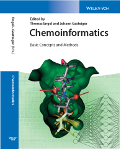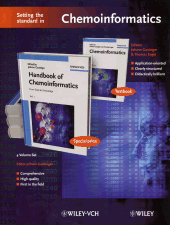 Dr. Thomas Engel - Faculty for Chemistry and Pharmacy
Dr. Thomas Engel - Faculty for Chemistry and Pharmacy
 Dr. Thomas Engel - Faculty for Chemistry and Pharmacy
Dr. Thomas Engel - Faculty for Chemistry and Pharmacy
Chemoinformatics - Basic Concepts and Methods (Vol. 1)This essential guide to the knowledge and tools in the field of chemoinformatics includes everything from the basic concepts to modern methods, while also forming a bridge to bioinformatics. |
 |
Applied Chemoinformatics - Achievements and Future Opportunities (Vol. 2)A clearly structured and applications-oriented approach to the topic, providing up-todate and focused information on the wide range of applications in this exciting field. |
 |
Text and Handbook (2003)From the basics to applications – this is the first text to provide both students and newcomers to this exciting field with the knowledge and tools needed. Practical tutorials lead readers step-by-step through the entire range of chemoinformatic tools. More > Everything chemists and other scientists need to know about this developing field – from data to knowledge. The “Handbook of Chemoinformatics” comprising 2000 pages in four volumes is the first reference work to be exclusively devoted to this exciting area. It will set the standard as the premier information source for the next decade. More > |
 |